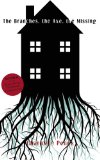The Branches, the Axe, the Missing
Charlotte Pence’s chapbook and winner of the Black River Chapbook Competition, The Branches, the Axe, the Missing, leads the reader through a sequence of unnamed poems. A brief narrative of a woman leaving her husband after a divorce and thinking about her homeless father is told alongside poems that address the development of language and social interaction among the evolution of humans as a species. Varied in form and length, each poem adds another link to the narrative chain that brings together a complex and sophisticated extended poem that dwells on our evolutionary desire to communicate.
Charlotte Pence’s chapbook and winner of the Black River Chapbook Competition, The Branches, the Axe, the Missing, leads the reader through a sequence of unnamed poems. A brief narrative of a woman leaving her husband after a divorce and thinking about her homeless father is told alongside poems that address the development of language and social interaction among the evolution of humans as a species. Varied in form and length, each poem adds another link to the narrative chain that brings together a complex and sophisticated extended poem that dwells on our evolutionary desire to communicate.
Raw, yet scientifically laced poems speculate and trace the human brain’s evolution. Early on in the chapbook, the speaker renders this image: “We were born from wood and fire. Roasting small mammals as we sat / in circles”—yet “outside the circle: darkness.” These pools of light reflect synapses in the brain connecting to form evolutionary development, such as when the narrative continues throughout, claiming:
However the story began, we know
its middles, know
how taming fire kicked us
out of arrested development.
And, later:
We, and no other animal, understand how to
start fire
. . . . . . . . . . . . . . . . . . . . .
with flint, chert, pyrites,
pocket link, feather down, pine moss, yucca
shreds, cedar bark, Bic.
A relationship between concrete objects and human understanding reveals a vital link to how people relate to the outside world and one another while also revealing the gaps in communication that can manifest over time.
The piecing together of a history of human development with the advent of fire is told alongside and in conjunction with a woman who must now live on her own. The speaker relates her story in fragments throughout the chapbook, linking her story with the depiction of early humans. In one poem, the speaker comments that
She does not know
the knowledge lost
before the mind
conceived of language,
conceived of sound
to represent
men cup couple of men.
The moment after we spoke
how did the world change?
Continuously obsessed with that first word spoken by our distant ancestors, the development of language and words and naming, the speaker attempts to speculate on that first moment of speech. The reader must now traverse these open-ended questions to piece the fragments together, to form some kind of individualized narrative.
While covering a plethora of other classic dichotomies, such as humans and nature or men and women, The Branches, the Axe, the Missing thrives in its constant retooling of how language impacts our understanding of our daily lives. Displaying a keen sense for nuanced storytelling while remaining in the realm of carefully refined poetic language, Pence creates multiple narrative lines within the limitations of the chapbook. Each condensation of language allows the reader to read and re-read the chapbook, piecing together new arcs every time.





